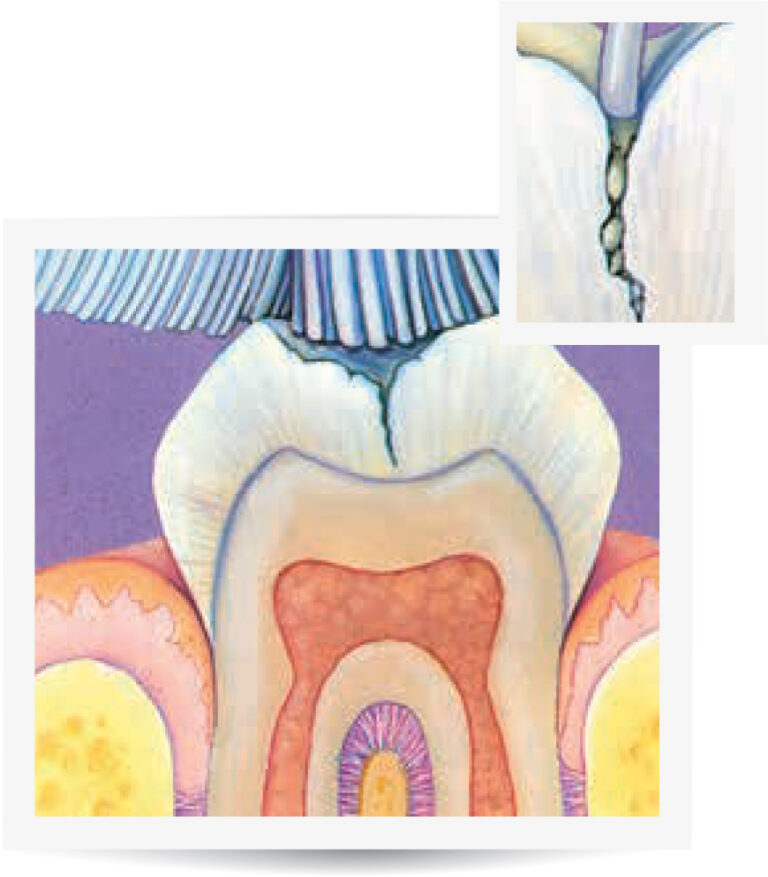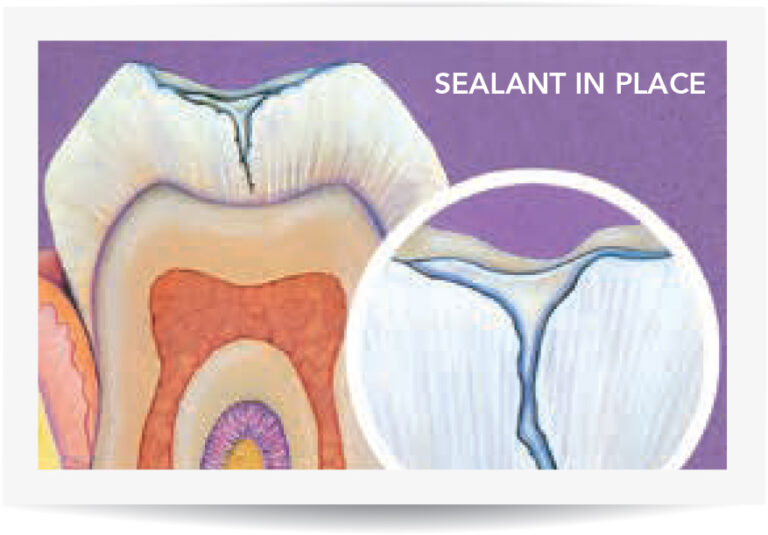Pit & Fissure Sealants
Sealants Vs. Fluoride
Sealants and fluoride prolong the life of your teeth by preventing dental decay. Sealants are applied topically to individual teeth and are a visible sign of protection.
Fluoride, on the other hand, may be used effectively from the prenatal stages through the adolescent period, when children are most prone to cavities. Fluoride is supplied in a variety of forms, including commercially prepared mouth rinses, foams, gels, drinking water and many toothpastes.
Your Patient Guide
Pit & Fissure Sealants
The Facts About Dental Sealants
Sealants can help preserve your child’s smile for a lifetime. Though dental sealants are not a cure-all in preventing tooth decay, they are cost-effective and helpful to patients – particularly children – in controlling decay in certain areas of the mouth.
A dental sealant is an acrylic-like material that helps shield out decay-causing bacteria from the chewing surfaces of the back teeth. We base our diagnosis and recommendation for dental sealants on the patient’s susceptibility to tooth decay and how the teeth were shaped when they originally formed below the gum.
Though there is no specific age at which sealants are indicated, often we will recommend that the best time to apply them is when the six-year old molars (the first permanent back teeth) appear

An example of a pit and fissure sealant
How To Sealants Prevent Decay?
Sealant material forms a protective barrier by bonding to tooth surfaces by covering natural depressions and grooves (called pits and fissures) in the teeth. More than 75 percent of dental decay begins in the pit and fissure areas of the back teeth. Combined with proper home care and regular dental visits, sealants are extremely effective in preventing tooth decay.
Are Sealants Suitable For All Teeth?
Sealants are applied only to pit and fissure areas of specific teeth. Unfortunately, they cannot be applied to the surfaces in between teeth, where daily flossing is recommended to prevent decay. Though sealants are most often applied to children’s teeth, many adults are now seeking the preventative benefits of pit and fissure sealants as well.
How Are Sealants Applied?
In this painless procedure, a solution is applied to the chewing surface of the tooth to condition the enamel and help it bond more effectively to the sealant material. The tooth is thoroughly washed and dried. Then the sealant material is applied and allowed to harden, sometimes using ultraviolet light.

Did You Know?
More than 75 percent of dental decay begins at the pit and fissure areas of the back teeth. Sealants can be applied directly to the tooth to protect it.
How Long To The Sealants Last?
Depending on your chewing pattern, the sealant effect can last for many years. Even though sealant material is durable, at subsequent dental appointments we make sure the sealant material is intact. Occasionally, we might need to replace or add a new layer of sealant material to keep the protective barrier strong and effective.
Now That Your Teeth Have Been Sealed
Chewing on ice cubes, hard candy or very sticky foods should be avoided as much as possible. Here are some tasty, healthful snack alternatives that, combined with sealants, fluoride and good home care, can help to reduce your susceptibility to tooth decay:
- Reduced fat peanut butter
- Air-popped popcorn
- Fresh vegetables
- Fresh Fruit
- Sugar-Free, non-fat yogurt
- Dry, unsweetened cereals
- Low-fat cheese
Some Additional Steps We Recommend In Protecting Your Teeth Include:
- Brush and floss regularly
- Follow a balanced diet
- Visit us at least twice per year for
- Check-ups
I never worry about my child getting cavities now that his teeth are sealed.
Martin K, 48
What Our Patients Say?
We accept all major insurance plans.
We accept a number of insurance plans to help cover the cost depending on your individual needs.
